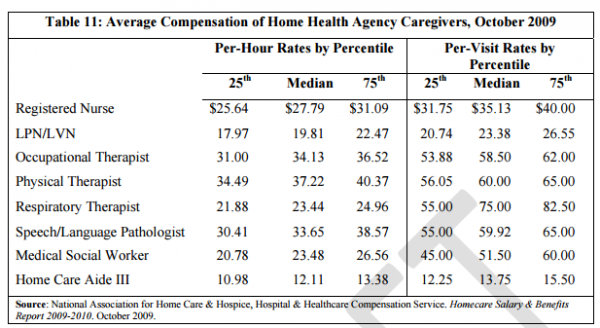After FDR passed away, Truman ended up being president (1945-1953), and his tenure is defined by the Cold War and Communism. The health care concern finally moved into the center arena of national politics and received the unreserved assistance of an American president. Though he served during a few of the most virulent anti-Communist attacks and the early years of the Cold War, Truman totally supported nationwide medical insurance.
Obligatory health insurance ended up being knotted in the Cold War and its opponents were able to make "interacted socially medication" a symbolic concern in the growing crusade against Communist influence in America. Truman's plan for nationwide health insurance in 1945 was different than FDR's strategy in 1938 because Truman was strongly devoted to a single universal extensive medical insurance plan.
He emphasized that this was not "socialized medication." He likewise dropped the funeral advantage that contributed to the defeat of national insurance coverage in the Progressive Period. Congress had blended responses to Truman's proposal. The chairman of your house Committee was an anti-union conservative and refused to hold hearings. Senior Republican Senator Taft stated, "I consider it socialism.
The AMA, the American Healthcare Facility Association, the American Bar Association, and the majority of then nation's press had no mixed sensations; they hated the strategy. The AMA claimed it would make physicians slaves, despite the fact that Truman highlighted that medical professionals would have the ability to pick their method of payment. In 1946, the Republicans took control of Congress and had no interest in enacting nationwide health insurance coverage.
Truman reacted by focusing even more attention on a nationwide health costs in the 1948 election. After Truman's surprise triumph in 1948, the AMA thought Armageddon had come. They examined their members an additional $25 each to resist national medical insurance, and in 1945 they invested $1.5 million on lobbying efforts which at the time was the most expensive lobbying effort in American history.
He stated mingled medicine is the keystone to the arch of the socialist state." The AMA and its supporters were again really successful in linking socialism with national medical insurance, and as anti-Communist sentiment rose in the late 1940's and the Korean War started, nationwide medical insurance became vanishingly unlikely (what is home health care).

Compromises were proposed but none achieved success. Instead of a single medical insurance system for the entire population, America would have a system of private insurance for those who could manage it and public well-being services for the poor. Dissuaded by yet another defeat, the advocates of medical insurance now turned towards a more modest proposal they hoped the country would adopt: health center insurance coverage for the aged and the starts of Medicare.
The 4-Minute Rule for Which Of The Following Is Not A Result Of The Commodification Of Health Care?
Union-negotiated health care advantages also served to cushion workers from the effect of health care expenses and undermined the movement for a government program. For may of the same factors they failed prior to: interest group impact (code words for class), ideological distinctions, anti-communism, anti-socialism, fragmentation of public law, the entrepreneurial character of American medication, a custom of American voluntarism, removing the middle class from the coalition of advocates for modification through the option of Blue Cross personal insurance strategies, and the association of public programs with charity, reliance, individual failure and the almshouses of years gone by.
The nation focussed more on unions as a car for health insurance, the Hill-Burton Act of 1946 related to healthcare facility expansion, medical research study and vaccines, the production of nationwide institutes of health, and advances in psychiatry. Lastly, Rhode Island congressman Aime Forand introduced a brand-new proposition in 1958 to cover health center expenses for the aged on social security.
But by focusing on the aged, the terms of the debate began to change for the very first https://coke-addiction-symptoms-of-drug-addiction.drug-rehab-fl-resource.com/ time. There was major lawn roots support from seniors and the pressures presumed the percentages of a crusade. In the entire history of the national medical insurance campaign, this was the very first time that a ground swell of grass roots support required an issue onto the national agenda.
In reaction, the government expanded its proposed legislation to cover doctor services, and what came of it were Medicare and Medicaid. The needed political compromises and personal concessions to the doctors (reimbursements of their traditional, sensible, and prevailing charges), to the hospitals (expense plus reimbursement), and to the Republicans created a 3-part plan, consisting of the Democratic proposal for comprehensive health insurance coverage (" Part A"), the modified Republican program of government subsidized voluntary doctor insurance coverage (" Part B"), and Medicaid.
Henry Sigerist showed in his own diary in 1943 that he "wished to utilize history to resolve the issues of modern medication." I think this is, possibly, a crucial lesson. Damning her own naivete, Hillary Clinton acknowledged in 1994 that "I did not value how advanced the opposition would be in communicating messages that were effectively political even though substantively incorrect." Maybe Hillary must have had this history lesson initially.
This lack of representation provides an opportunity for bring in more individuals to the cause. The AMA has always played an oppositional function and it would be sensible to construct an alternative to the AMA for the 60% of doctors who are not members. Even If President Costs Clinton stopped working doesn't mean it's over.
Those who oppose it can not eliminate this movement. Openings will happen again. All of us need to be on the lookout for those openings and likewise require to create openings where we see opportunities. For instance, the concentrate on health care costs of the 1980's presented a department in the judgment class and the debate moved into the center again - how much does home health care cost.

Some Known Questions About What Does Single Payer Health Care Mean.
Vincente Navarro states that the majority opinion of national medical insurance has whatever to do with repression and browbeating by the capitalist corporate dominant class. He argues that the conflict and struggles that continually occur around the problem of health care unfold within the criteria of class and that coercion andrepression are forces that identify policy.
Red-baiting is a red herring and has actually been used throughout history to stimulate fear and may continue to be utilized in these post Cold War times by those who want to irritate this argument. Lawn roots initiatives contributed in part to the passage of Medicare, and they can work again.
Such legislation does not emerge silently or with broad partisan support. Legislative success requires active governmental management, the commitment of an Administration's political capital, and the exercise of all way of persuasion and arm-twisting (how many countries have universal health care)." One Canadian lesson the motion towards universal health care in Canada started in 1916 (depending on when you start counting), and took until 1962 for passage of both health center and physician care in a single province.
That is about 50 years entirely. It wasn't like we sat down over afternoon tea and crumpets and said please pass the healthcare expense so we can sign it and proceed with the day. We battled, we threatened, the medical professionals went on strike, refused patients, people held rallies and signed petitions for and against it, burned effigies of government leaders, hissed, jeered, and booed at the physicians or the Premier depending upon whose side they were on.